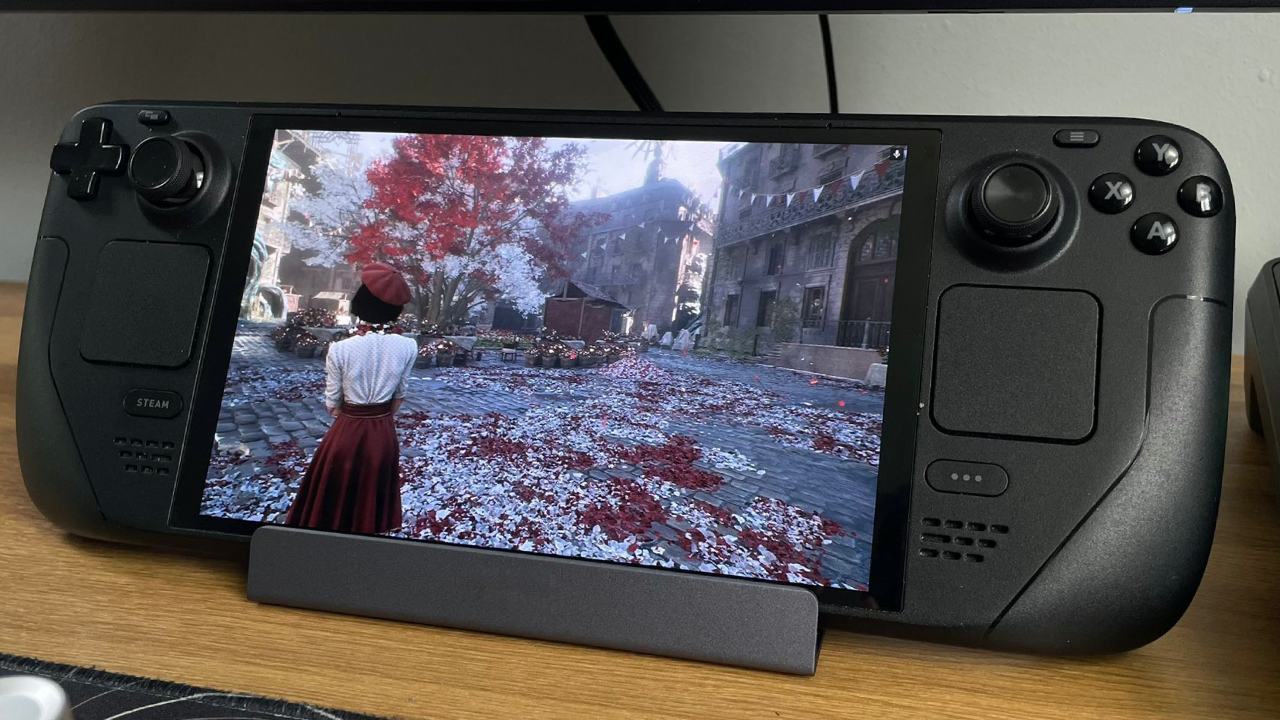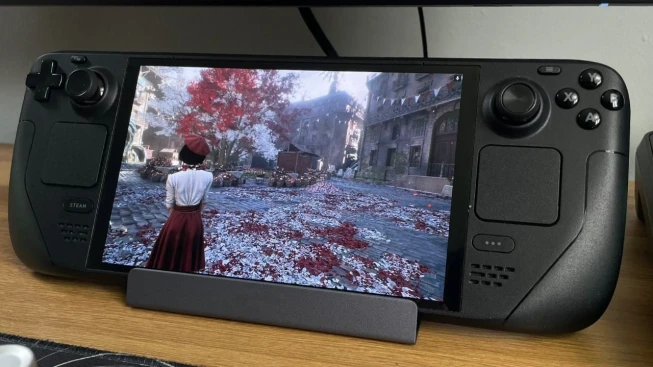Cloud gaming has long been a popular topic in the gaming community. Because powerful servers can now handle demanding visual tasks, some players view it as the future of gaming. It can offer a significant advantage, particularly for less powerful systems.
But it comes with downsides—streaming games usually doesn’t look as sharp as playing them directly on your PC, and if your Wi Fi isn’t strong or stable, the experience can suffer.
Setting Up GeForce Now on Steam Deck
GeForce Now installation on Steam Deck has been greatly simplified. Rather than installing Chrome and adding GeForce Now as a non Steam application, NVIDIA now provides an official script.
Simply switch to desktop mode, open the browser, navigate to the GeForce Now download page, select “Get Started on Steam Deck,” and run the installer.
The script automates the process of adding GeForce Now to gaming mode and then reboots back into it. Once rebooted, link your NVIDIA account—ideally via your phone for convenience—and you’re ready to stream games immediately.
Instant Access to Games
One of cloud gaming’s biggest perks is instant playability. You no longer wait for massive downloads; every title in your GeForce Now library resides on NVIDIA’s servers. Launching Cyberpunk 2077, for example, takes mere seconds before gameplay begins.
On Steam Deck’s native 1280×800 display, the stream runs at around 60fps—roughly double the performance you’d see running natively on the device.
Performance and Battery Life
Streaming shifts all heavy lifting to the cloud, so your Steam Deck’s CPU and GPU remain largely idle. Fans sit at 0 RPM, temperatures stay low, and battery life can easily double compared to local play.
Even on a standard ISP-provided Wi-Fi router located a floor away, a 1 Gbps connection far exceeds NVIDIA’s 15 Mbps minimum requirement for 1280x800p 60 fps streaming (and only 45Mbps for 4K 120 Hz).
As long as your network is stable, visual quality holds up impressively, with crisp textures and responsive controls that feel nearly indistinguishable from local play.
.jpg)
Input Lag and Competitive Play
Competitive titles often raise concerns about input latency. Testing a fast paced shooter revealed a barely perceptible delay, on the order of a few milliseconds. If you’re a professional level player who demands absolute minimum latency, local hardware still reigns supreme.
For most Steam Deck users, however, cloud streamed competitive matches remain highly enjoyable, provided you’re comfortable with a slight awareness of playing remotely.
Software and Workarounds
Some games may present launch menu issues because GeForce Now’s desktop environment is optimized for mouse and keyboard use.
When first launching Baldur’s Gate 3, Steam Deck trackpad and buttons failed to interact with the EULA or DirectX dialogs.
Adding a USB mouse (and keyboard, if needed) resolves these stalling screens, making GeForce Now a solid option for both docked and undocked play.
While this workaround adds complexity for couch gaming, it ensures full compatibility across the catalog.
Pricing and Value Comparison
NVIDIA offers a free tier that primarily serves as a network test, complete with ads and a 1-hour session limit. Paid memberships start at $10–$20/month, depending on priority access and extended session lengths.
Unlike PC Game Pass—where titles are included—GeForce Now requires you to own each game already, though free to play titles like Fortnite or The Finals remain accessible at no additional cost.
If you already have a large library, GeForce Now extends its life on Steam Deck; if you’re building a new collection, subscription-inclusive services may offer a better entry value.

Value Proposition
GeForce Now allows Steam Deck to run high-end PC games without stressing its hardware. It gives quick access to games, improves battery life, and supports a wide range of titles.
A strong internet connection is important, and some games need a mouse and keyboard to get started.
But for big, demanding games that don’t run well on Steam Deck alone, cloud gaming is a great option.
Whether playing locally or through the cloud, it’s great to have more ways for more people to enjoy games.
Check our Other Handheld Articles :
- ASUS ROG Ally X Handheld Review: Double the Battery, Double the Comfort
- Nintendo Switch 2 Vs. Original Switch 1: A Full Comparison
- How To Connect A Camera And Join Voice Chat With Nintendo Switch 2
- Nintendo Switch 2 Review: Handheld Performance, Features & Value Breakdown
- ROG Xbox Ally X Vs. ROG Ally X: Display, Battery & Controls
- ASUS ROG Ally X vs. Steam Deck OLED: Display, Battery & Gaming Benchmarks
- MSI Claw 8 AI+ Review: Display, Controls & Gaming
- Nintendo Switch 2 vs. Steam Deck OLED: Gaming, Performance, Battery, Display and Value
- NVIDIA GeForce Now on Steam Deck: Battery Life, Gameplay, Streaming
- PlayStation Portal Review: Remote Play, Cloud Streaming & Travel Gaming
- PlayStation Portal vs. Lenovo Legion Go: Best Portable Gameplay
